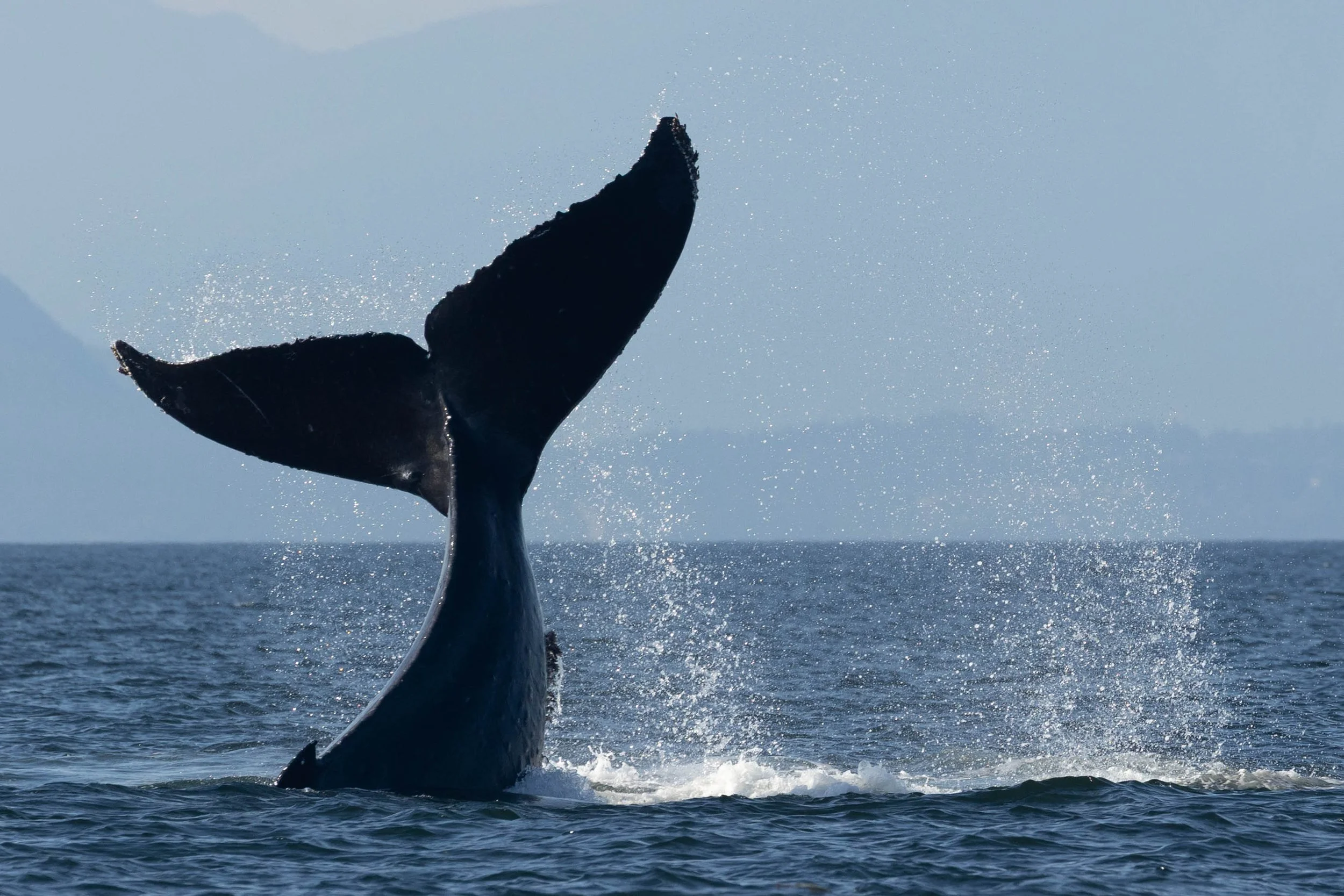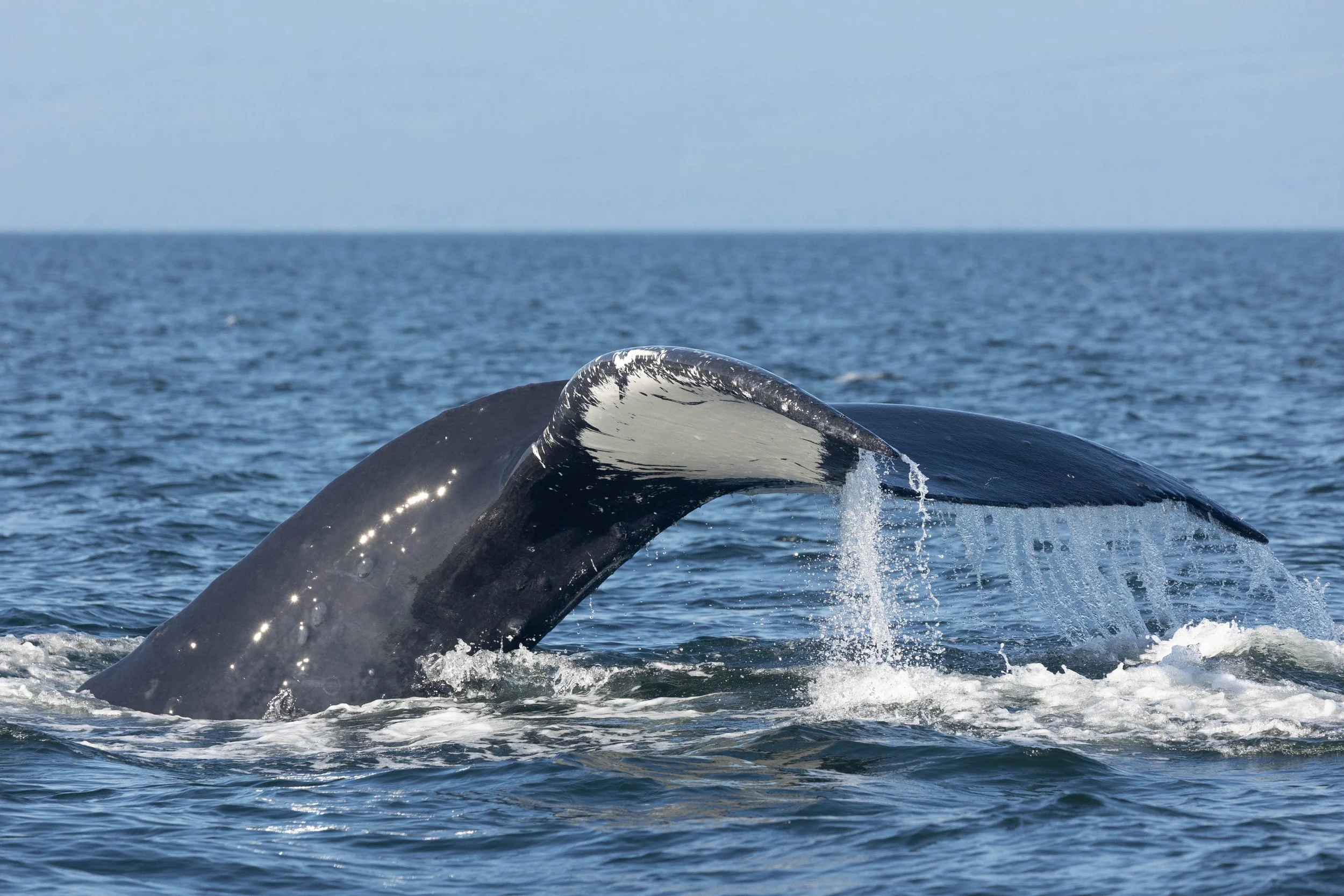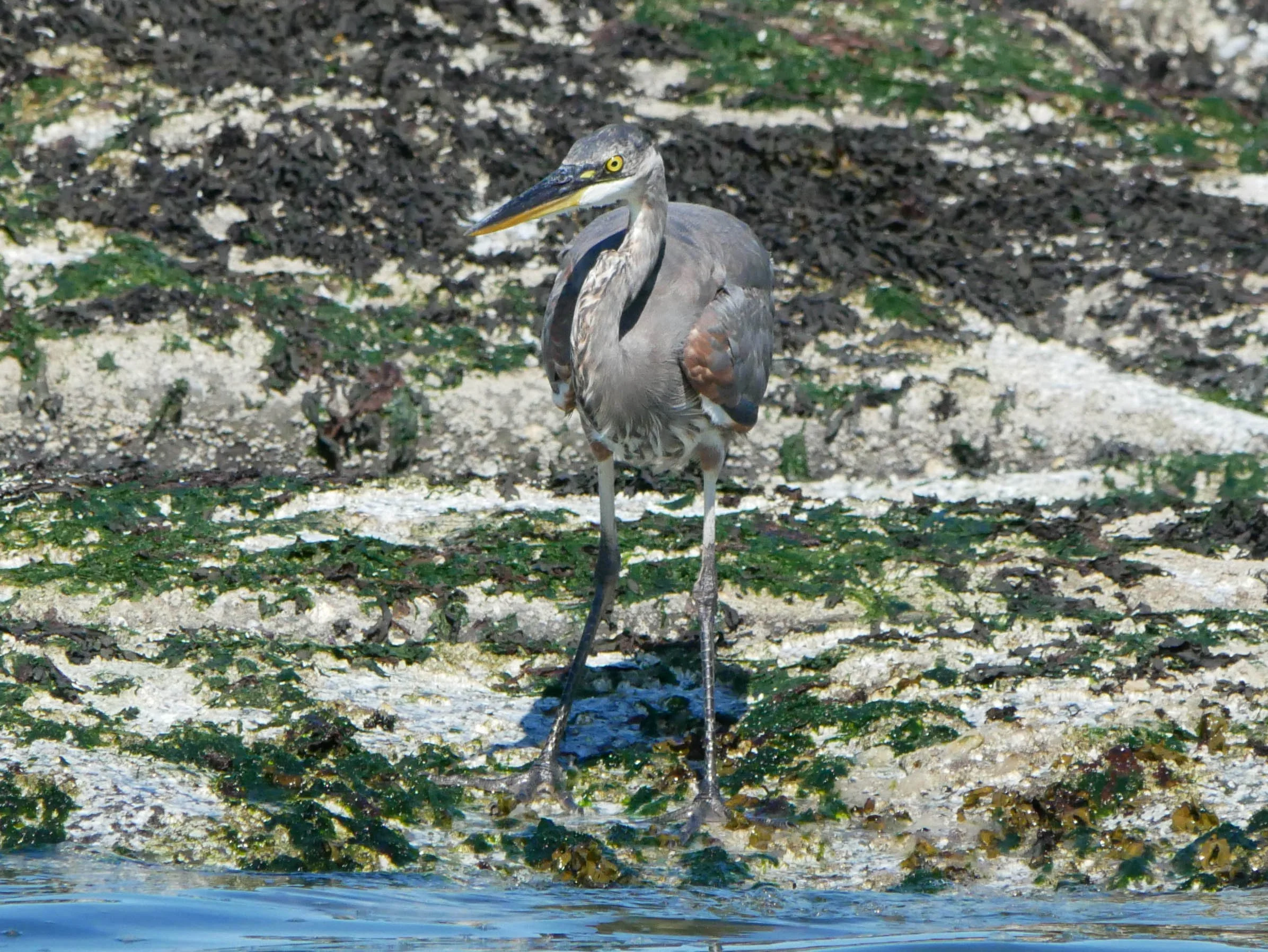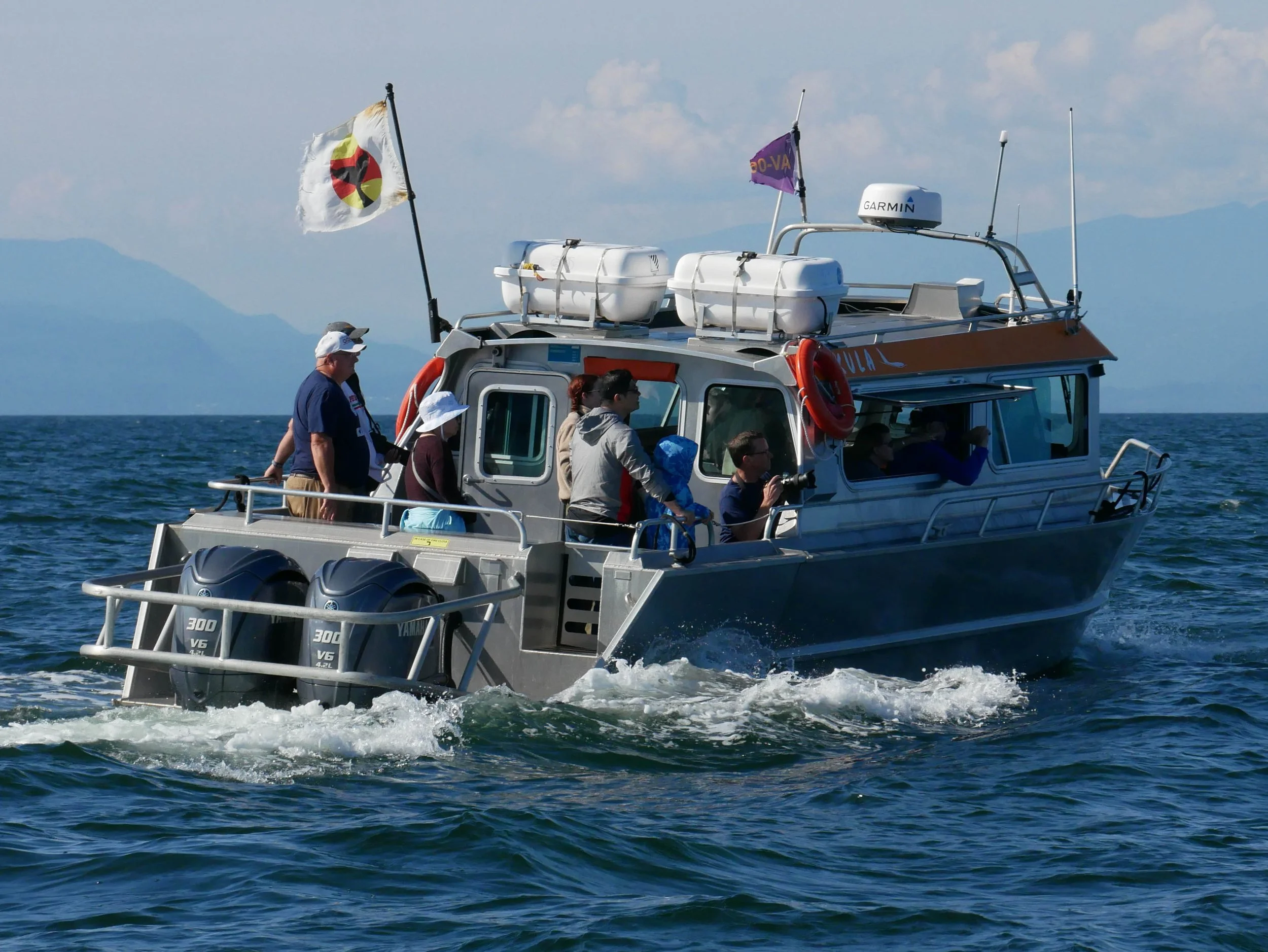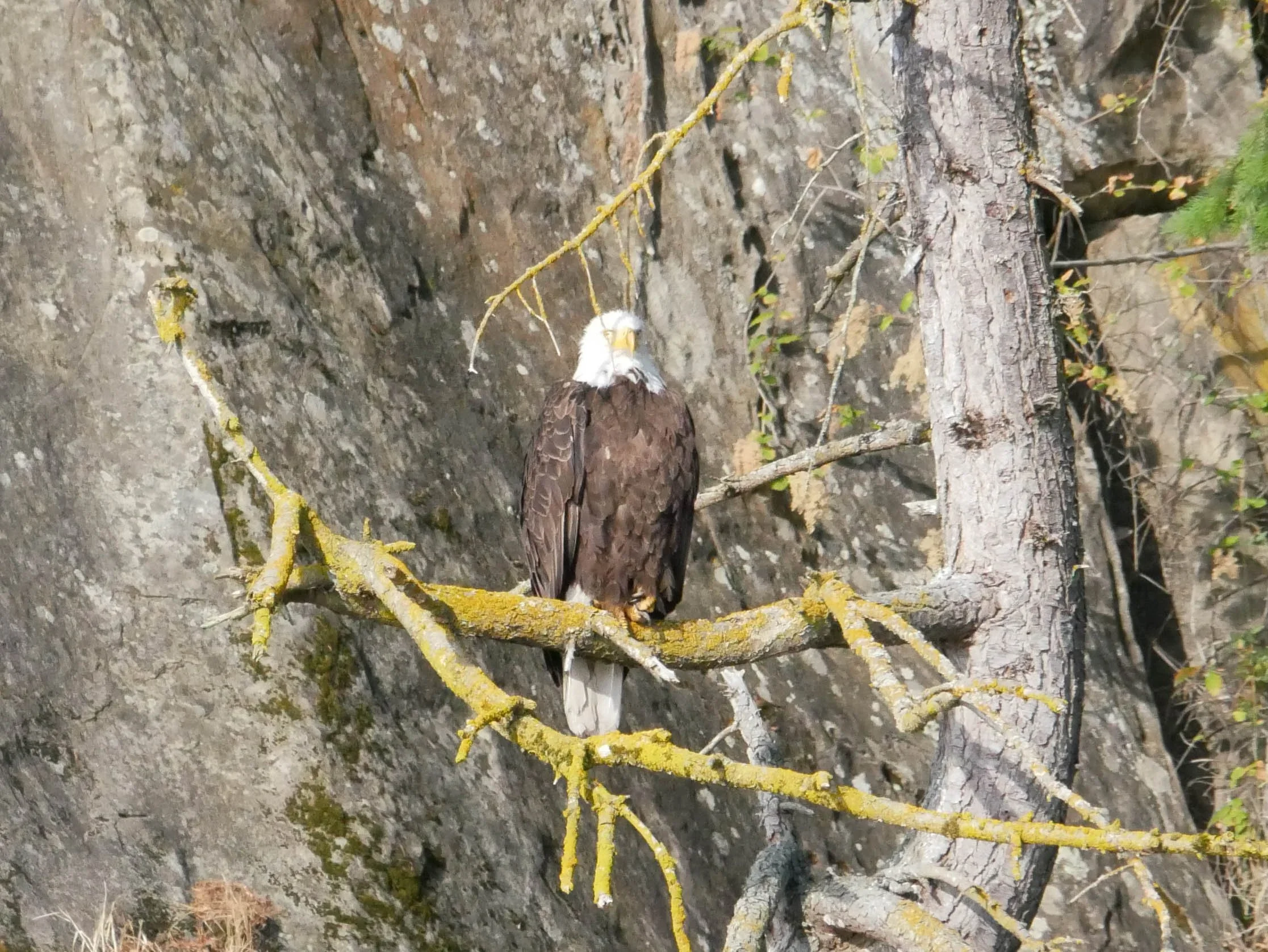July 27, 2025, 3:30 PM - Fleeting associations with our Humpback Whales
It was another beautiful day to spend on the Salish Sea, filled to the brim with humpback whale sightings! Throughout the tour, we ended up spotting nine different humpback whales, travelling in groups of various sizes and sometimes with changing composition.
Some of the humpbacks were spotted alone, like Holey Moley (BCY1198) and Yakima (BCX2182). In contrast, others had grouped up, travelling in pairs that turned into trios: Anvil (BCZ0410) with Vanta (BCX1730), who eventually had Nike (BCX1377) join them, and Geometry (BCZ0338) and Apollo (BCY0862), who had Incognito (BCX2053) travelling nearby. There was also an unknown lone individual in the mix today, but we were never able to confirm who that was.
Today was a great example of the complex social structures and relationships that the humpback whales in our water have. It’s wild to see interactions like these and be able to reflect on the time, not very long ago, that we thought that these animals were completely solitary. Commercial whaling nearly decimated the local humpback whale population, with estimates putting it at almost 90% of them being removed from the environment. With their numbers so low, it is most likely that the whales just weren’t able to find each other, so we didn’t get to see as many of these interactions. The other impact of their low numbers was that the environment would have been changing. Humpback whales are known as ecosystem engineers, meaning that they change the environment around them. They do this while they are feeding, moving nutrients through the water while also mixing the water column as they go. Humpback whales feed on small schooling fish and krill while they are spending time in our waters, building up their fat reserves before migrating down to their breeding grounds. Since these animals will spend their time deeper in the water column during the day and then move closer to the surface at night, the humpbacks also follow a similar pattern.
With their massive size, humpback whales are dragging a large volume of water along with their bodies. This is how they mix the water, but the way that they move nutrients is slightly different. It’s through their poop! Since they feed at the depths but defecate at the surface, this moves the nutrients up to the surface, making them available for the primary producers in the water column. Through this, the humpbacks are helping to increase their food supply, since the krill will feed directly on those phytoplankton. You may say they are a perfect balance between feeding and fertilizing. Their waste is nutrient-rich, especially in iron and nitrogen, essential elements for phytoplankton growth. These microscopic plants are the foundation of the ocean food web, supporting everything from zooplankton to fish to whales themselves. When humpbacks release a plume of poop, often called a "fecal plume," it acts like a natural fertilizer spreading out across the surface, where sunlight fuels phytoplankton blooms. This process is often referred to as a “whale pump”, circulating nutrients from deep feeding dives back to the surface. In this way, humpbacks are feeding the very base of the food chain that sustains their prey. It’s a beautiful cycle: the whales feed, they poop, their poop fuels phytoplankton, the phytoplankton feed krill and fish, and the whales feed again. Their role is a powerful reminder that even poop has a place in the productivity and health of our oceans.
During our tours, it's not just the whales that steal the show; we often encounter a whole cast of charismatic coastal wildlife, each playing a unique role in the marine ecosystem. Along rocky shorelines and sun-warmed haulouts, you’ll frequently spot harbour seals lounging like little sausages on the rocks. With their expressive eyes and spotted coats, they’re always a crowd favourite. Fun fact about harbour seal poop! Scientists can actually study their scat to learn what they’ve been eating; everything from fish bones to squid beaks can be found inside, helping researchers understand diet and habitat use.
High above, perched in the treetops or soaring overhead, bald eagles keep a watchful eye on the sea below. These impressive raptors have a wingspan of up to 8 feet and are known for their keen eyesight; they can spot a fish from hundreds of feet in the air! As for eagle poop, here’s a quirky fact: it’s incredibly acidic. So much so that it can bleach and even damage the leaves of trees where eagles perch repeatedly!
Cormorants are another frequent sight along the coast, often seen drying their wings with their signature outstretched pose. These excellent divers hunt for fish underwater and can stay submerged for up to a minute. Cormorant poop, or guano, may not smell great to us, but it’s incredibly rich in nitrogen and has historically been harvested as a powerful fertilizer.
And then there are the Steller Sea Lions, the loudest and largest pinnipeds you’ll likely see on tour. Males can weigh over a ton and often bellow and roar to establish dominance on crowded haulout sites. Their poop! Also, a treasure trove for science. Researchers can collect sea lion scat from haulouts to track pollutants, hormones, and even the presence of microplastics in their diet.
From high-flying predators to flippered fishers, each of these animals not only contributes to the marine ecosystem in their own way, but their poop does too! It turns out nature wastes nothing, and even droppings have a story to tell!
Enjoy the photos below taken by Desarae Poier, Hayleigh Hilbert and Jordan Robinson.
Tails up! Photo by Des Poier.
Anvil’s dorsal fin. Photo by Des Poier.
Anvil going down. Photo by Des Poier.
Vanta tail lobbing. Photo by Des Poier.
Vanta still swinging. Photo by Des Poier.
Anvil surfacing. Photo by Des Poier.
A fluke waterfall from Anvil. Photo by Des Poier.
Still at it! Photo by Des Poier.
Anvil’s fluke. Photo by Des Poier.
Geometry diving. Photo by Des Poier.
Apollo’s fluke. Photo by Des Poier.
A rotund harbour seal. Photo by Hayleigh Hilbert
Did you know the blue heron stands around 4 feet tall? Photo by Hayleigh Hilbert
Steller Sea Lions fighting over the best spot on the rocks. Photo by Hayleigh Hilbert
An itchy Steller. Photo by Hayleigh Hilbert
Kula watching the whales. Photo by Hayleigh Hilbert
Swish, that’s a lot of water. Photo by Hayleigh Hilbert
Vanta lifting their tail high. Photo by Hayleigh Hilbert
Still going, Vanta has calories to burn! Photo by Hayleigh Hilbert
A bald eagle perched above. Photo by Hayleigh Hilbert
Cormorants in their nests. Photo by Hayleigh Hilbert
Keta at the Bluffs. Photo by Hayleigh Hilbert
Entrance Island. Photo by Jordan Robinson
Cascadia watching whales. Photo by Jordan Robinson
The Gabriola Bluffs. Photo by Jordan Robinson




